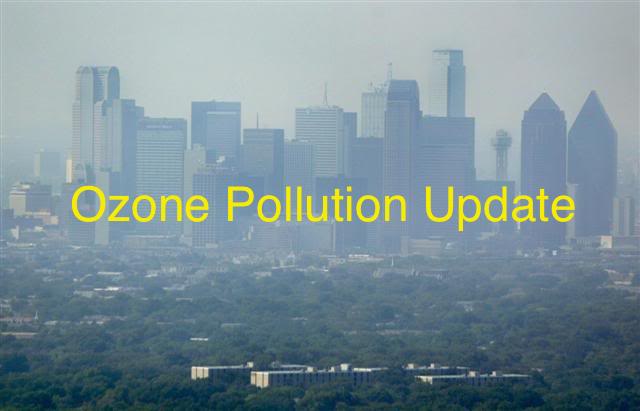By Joshua Smith, Staff Attorney for Sierra Club Environmental Law Program

Last week, a federal judge ruled in favor of Sierra Club in our Clean Air Act "deadline suit" claim, which we filed to force the Environmental Protection Agency (EPA) to issue area nonattainment designations for the 2015 ozone standard across the country.
This step in the right direction comes on the cusp of the annual “ozone season” from April through October, as the days are warmer with more sunlight during these months and ground-level ozone reaches its highest concentrations. (Ozone is created when nitrogen oxides (NOx) and volatile organic compounds (VOCs) - pollutants from coal plants, chemical plants, oil refineries, as well as cars, trucks, and SUVs - combine in intense, direct sunlight under calm winds and clear skies.)
Nearly 20 million Texans (70%) live in the four most polluted Texas urban areas facing new designations as nonattainment for ozone, which has significant health impacts.
Ozone contributes to respiratory and cardiovascular disease, perinatal and reproductive impacts, and premature death. And these adverse health outcomes disproportionately affect the health of our most vulnerable populations, such as people with asthma, children, older adults, and those who work outdoors, such as construction workers.
The four areas of Texas that are failing to meet the new ozone standard where EPA typically includes all of the Metropolitan Statistical Areas (MSAs):
The ten counties that make up the Dallas-Fort Worth area
The eight counties surrounding Houston-Galveston-Brazoria
Bexar County (and possibly all surrounding eight MSA counties)
El Paso County
It was only last month that the EPA proposed to designate both the DFW and Houston areas under the 2015 ozone standard as nonattainment (i.e., noncompliance) and proposed to find El Paso in attainment. DFW and Houston just met the 1997 ozone standard, but are classified by EPA as large nonattainment areas under the 2008 ozone standard. El Paso has a complex situation with Juarez partially contributing to its air pollution.
For Bexar County and its MSA, the agency kicked the can down the road, claiming that it wanted more time to evaluate three years of ozone data from Texas (in reality, Governor Abbott asked EPA Administrator Scott Pruitt not to designate San Antonio; there is no additional data that supports attainment).
For all of the designations, EPA claimed that it needed more time before it could finalize the various designations.
But on March 12, the district court rejected EPA's request for additional time.
As a result, EPA must finalize the designations for DFW, Houston, and El Paso by April 30, 2018.
For Bexar County and its surrounding counties, the court ordered EPA to propose and finalize a designation within 127 days -- on July 17, 2018.
Because EPA did not formally propose a designation for the San Antonio area last month, both the state of Texas and the public will have an opportunity to submit comments. Earlier this year, many San Antonio area Sierra Club members and supporters contacted the EPA to urge them to do something about ozone pollution.
On March 19, 2018, EPA informed Texas that it was likely to designate Bexar County as being in nonattainment for the 2015 ozone standard. Stay tuned for the public comment period; we’ll keep you updated!
If San Antonio is determined to be in nonattainment, this would be the first time ever for the Alamo city. However, according to Clean Air Director Neil Carman, San Antonio has been dodging non-attainment for 25 years.
These designations are a big deal, as they have the potential to lay the legal groundwork for significant reductions in ozone precursor pollutants, like NOx and volatile organic compounds, over the next several years. For areas that are ultimately designated as nonattainment, the state (or EPA, if the state fails) must require pollution reductions to ensure that the area comes into compliance within three years. And EPA cannot simply "redesignate" the area to "attainment," or refuse to do anything. EPA has set the classes for the designations, and since all areas in Texas are 80 parts per billion or less, we can expect EPA to designate the four areas in “marginal” nonattainment, the weakest classification.
Eventually we'll have a better EPA, and this will be a good legal tool to help Texas communities in the fight for cleaner air.